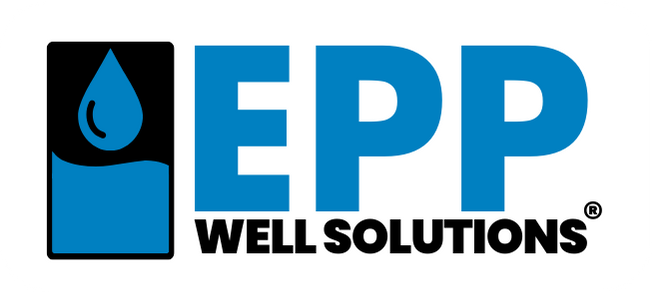Navigating Well Permits: A Step-by-Step Guide for New Homeowners
Buying your first home is a milestone that blends exhilaration with a dash of daunting reality. For many new homeowners venturing into rural or semi-rural properties, the dream often includes the independence of a private water well. No more worrying about municipal water bills or shared line disputes—just pure, self-sufficient hydration straight from the earth. But before that first drill bit touches soil, there's a crucial hurdle: navigating well permits. It's a process that can feel like decoding an ancient scroll, filled with local jargon, environmental checks, and timelines that stretch longer than you'd like.
As of October 2025, with water scarcity concerns rising across the U.S.—exacerbated by prolonged droughts in the West and erratic weather patterns elsewhere—securing a well permit isn't just bureaucratic red tape. It's a safeguard ensuring your well draws sustainably from aquifers without depleting shared resources. According to the U.S. Geological Survey, over 13 million households rely on private wells, and improper permitting has led to thousands of contamination cases annually. Fear not, though. This step-by-step guide is your roadmap, designed for the uninitiated homeowner. We'll demystify the process, highlight common pitfalls, and even touch on innovative tools like the Well Harvester® to make your system future-proof. By the end, you'll approach permitting with confidence, ready to turn that plot of land into a hydrated haven.
Step 1: Research Your Local Regulations and Jurisdiction
The journey begins with understanding where your well fits into the regulatory landscape. Well permits aren't a one-size-fits-all federal affair; they're governed at the state and local levels, often with county-specific twists. Start by pinpointing your jurisdiction—city, county, or state water board—and dive into their online resources.
Head to your state's department of natural resources or environmental protection agency website. For instance, in Washington State, the Department of Ecology oversees well construction under the Water Resources Program, mandating permits for any new drilling deeper than 15 feet. Similarly, California's State Water Resources Control Board requires a permit from the local groundwater authority, especially in basins facing overdraft issues. If you're in Texas, the Texas Commission on Environmental Quality handles approvals, emphasizing setback distances from septic systems.
Why does this matter? Regulations vary wildly. Some areas cap well depth based on aquifer protection, while others require hydrogeological assessments for properties near sensitive wetlands. As a new homeowner, allocate a weekend to this: download permit application forms, review fee schedules (typically $200–$1,000, depending on location), and note any seasonal restrictions—many permits halt during rainy seasons to avoid erosion.
Pro tip: Contact your county health department early. They're the frontline gatekeepers and can clarify nuances like grandfathered exemptions for existing wells on your property. One overlooked detail? Zoning overlays. If your land straddles agricultural and residential zones, you might need dual approvals. Document everything—emails, call notes, PDFs—as this builds your audit trail for later steps.
This research phase might take 1–2 weeks, but it's foundational. Skipping it could mean re-drilling at double the cost if your initial site doesn't comply.
Step 2: Assess Your Property and Water Needs
With regulations in hand, shift focus to your slice of earth. A thorough property assessment ensures your well isn't just legal but practical, matching your household's demands without overtaxing the aquifer.
Begin with a site survey. Hire a licensed surveyor or use free tools like Google Earth to map key features: elevation contours, soil types, and proximity to contamination sources like farms or roads. Wells must typically sit 50–100 feet from septic tanks, 10 feet from property lines, and uphill from livestock areas to prevent runoff infiltration. In arid regions like Arizona, additional rules mandate 100-foot buffers from washes to guard against flash flood sediment.
Next, calculate your water needs. The average U.S. household guzzles about 300 gallons daily, per the EPA—more if you have a garden, pool, or guests. Factor in peak usage: mornings with multiple showers can spike demand to 20 gallons per minute. Low-yield aquifers (under 5 GPM) are common in older formations, so consult a hydrogeologist for a preliminary yield estimate. Tools like the USGS National Water Information System offer free aquifer maps to gauge recharge rates in your area.
Don't forget environmental impact. In 2025, many states now require a basic groundwater model simulation, especially post-2023's federal push for sustainable extraction under the Infrastructure Investment and Jobs Act. This might involve soil borings to test for naturally occurring contaminants like arsenic, prevalent in the Midwest.
Budget $500–$2,000 for this assessment. It's an investment that prevents costly surprises, like discovering your ideal drill spot is off-limits due to a buried utility line—always call 811 for a free locate service before any digging.
Step 3: Select a Qualified Well Driller and Prepare Your Application
Now, assemble your team. Choosing a driller isn't unlike picking a contractor for your roof—credentials count. Look for state-licensed professionals with bonds and insurance, verified through your local contractor board. Read reviews on platforms like Angi or the Better Business Bureau, and ask for references from recent well projects in your county.
A good driller will collaborate on your application, which typically includes site plans, driller certifications, proposed depth (often 100–500 feet), casing specs, and a pump schematic. Forms are straightforward but detailed: expect questions on grout seals to prevent surface water intrusion and screen slot sizes for optimal yield without sand drawdown.
Fees vary—rural counties might charge $300, urban ones up to $800—plus escrow for abandonment bonds if the well underperforms. Submit via mail, online portal, or in-person; processing times range from 2 weeks in streamlined states like Idaho to 90 days in high-scrutiny areas like Colorado.
Common pitfall: Incomplete apps. Double-check for signatures and attachments. If your property abuts a public aquifer, you may need a water rights filing, adding layers like proof of beneficial use (domestic vs. irrigation).
Once submitted, track status via the portal. Patience is key—delays often stem from backlog, not errors.
Step 4: Oversee Drilling, Inspection, and Approval
Approval in hand? It's showtime. Drilling day arrives with rigs rumbling onto your site, a ballet of augers and mud pumps extracting core samples every 50 feet to log geology. Expect 1–3 days for a standard residential well, weather permitting.
Your driller handles the build: casing installation (PVC or steel, sealed with bentonite grout), screen placement in the productive zone, and development via surging to clear debris. Pump installation follows—submersible for deeper wells, jet for shallow—tested for static water level and drawdown.
Enter the inspector: a county or state official verifies compliance on-site. They check casing integrity, grout depth (often 20 feet minimum), and pump flow against permitted specs. In some states, like Oregon, pump tests run 24 hours to confirm sustainable yield, logging recovery rates.
If all aligns, you get a completion report and certificate—your golden ticket to operation. Issues? Minor ones like improper grouting mean fixes; major (rare) like aquifer damage could void the permit.
Post-approval, log your well data. It's required for resale and helps with future troubleshooting.
Integrating Smart Storage Solutions Like the Well Harvester®
With your permit secured and well flowing, the real magic happens in optimization. Many new homeowners discover that even a permitted well can falter under demand spikes or seasonal dips. This is where innovative systems shine, turning a basic setup into a resilient powerhouse.
Enter the Well Harvester®, a patented system from Epp Well Solutions that redefines low-yield well management. Designed by a family of well experts who've lived the dry-tap frustration since 2010, this automated controller pairs seamlessly with your new well, preventing overpumping while maximizing output. Unlike traditional timers that blindly cycle pumps, the Well Harvester® uses real-time sensors to monitor aquifer levels and adjust draw rates dynamically—ensuring your 3 GPM well behaves like a 20 GPM gusher during peak hours.
Imagine mornings without sputtering faucets: the system stores excess production in a compatible reservoir, releasing it on demand via variable speed controls. For new homeowners, integrating it post-permitting is straightforward—your driller can plumb it in during pump install.
In essence, the Well Harvester® isn't an add-on; it's the smart evolution of your permitted well, future-proofing against 2025's water volatility.
Step 5: Maintain Compliance and Monitor Long-Term
Permits aren't set-it-and-forget-it. Annual reporting may be required in water-stressed basins, tracking usage via meters. Test water quality yearly—coliforms, nitrates, heavy metals—using certified labs (costs $100–$300). The CDC recommends this to catch issues early, like those from nearby fracking booms.
For longevity, schedule pump tune-ups every 3–5 years. Watch for yield drops, signaling recharge slowdowns or encrustation. If drought hits, voluntary curtailment plans (common in Nevada) let you pause draws for rebates.
Resale tip: Keep records pristine. A documented, permitted well boosts property value per real estate studies.
Common Challenges and How to Overcome Them
No guide's complete without addressing bumps. Delays? Build buffer time—apply 3 months pre-move-in. Cost overruns? Get itemized bids covering contingencies like hitting bedrock.
Environmental snags, like endangered species habitats, might reroute your site—consult ecologists upfront. And for shared aquifers, neighbor disputes over drawdown are rising; mediation via extension services helps.
In coastal zones, saltwater intrusion looms—permits often mandate monitoring wells. Inland, acid rain legacies mean pH checks during permitting.
Wrapping Up: Your Path to Well-Owned Peace
Navigating well permits as a new homeowner might start with a stack of forms and a knot in your stomach, but it's the gateway to empowered living. From initial research to that first gush of clear water, each step builds equity in your home's heart—its water source. Remember, you're not alone; resources abound, from state hotlines to pros like those at Epp Well Solutions.
Ready to drill deeper into your options? Contact us for a free consultation on permitting-friendly systems like the Well Harvester®. Here's to wells that run as deep as your roots.



